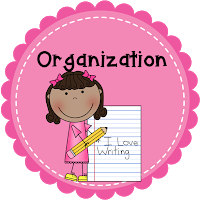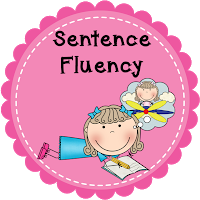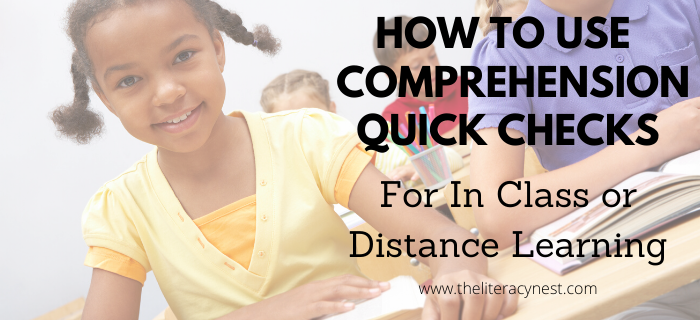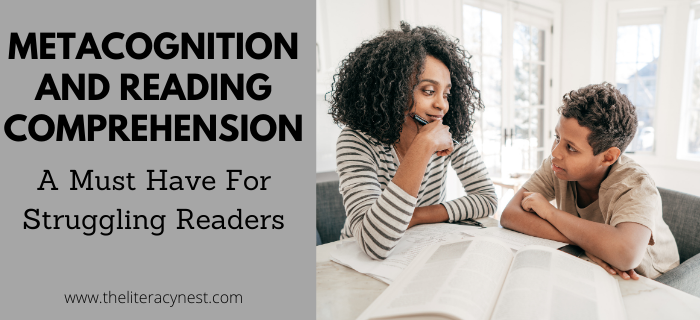Writing On Wednesday With Comprehension Connection
Hello from Comprehension Connection! My name is Carla, and I’m glad to be visiting The Reading Tutor/OG today to share a few ideas on the topic of writing. I am a reading specialist in Virginia, and I’m in my twenty third year. Wow, time flies! Much of my experience has been in the Title 1 Reading department, so most of my students struggle with both reading and writing. When Emily and I found each other through our collaborative blog hop event, her expertise with Orton Gillingham was of interest to me. Several years ago, I trained in Wilson Reading which was based upon Orton Gillingham principles. My knowledge of Orton Gillingham is limited though, so I asked if Emily would share some helpful tips with my followers related to it. In exchange, I am visiting to share some of what I’ve learned this summer about the Six Traits of Writing.
Many of the students I teach with reading challenges struggle with writing. Following the Response to Intervention model, I have chosen to address these challenges by building my repertoire of instructional techniques and writing resources that fit each of the Six Traits of Writing. As a review, I’ll share information about each of the six traits.
Students need to begin with one central idea and carry this idea throughout their writing. With expository writing, students may be involved in researching a topic to find supporting information to support the main idea they wish to express. With persuasive writing, information to support the writer’s position is desired, and with narrative writing, a theme should be evident.
To help students form ideas, teachers must decide on a prompt or focus and utilize multiple ways to build schema or ways to brainstorm. To generate ideas, I have used word splashes, carousel brainstorm, alphablocks or ABC brainstorm, webbing, Venn diagrams, tree maps, and column notes to name a few. Each of these is linked to a blank form for teachers to print and use. For students who tend to “get stuck” in writing, this is a really important part of the writing process. Prior to beginning a writing assignment, teachers can also incorporate mentor text read alouds that help the students think of ideas. Below are a few book titles you might include.
Voice shines through when a student expresses him/herself so that his/her personality shows through the writing. To address voice , the revising stage of the writing process is key. Mini lessons on using Wow words vs. dead words and on figurative language (specifically work with idioms) can help students learn better ways to express themselves. Another great way to add voice is by using more descriptive verbs to help readers with imagery. The list of great mentor texts for voice is deep. These three are my favorites.
For many students, the thought of putting ideas into paragraphs is just a foreign concept. In order to help students develop this skill, I’ve found the Four Square writing model very helpful. At the beginning of the year, my students wrote in one continuous paragraph with no indentations and sometimes without end punctuation. Through lots of modeling and shared writing, the end products are changing.
Four Square Writing isn’t perfect for every type of writing, but I believe it’s best to teach one organizational plan at a time. Once use of Four Square is mastered, then other organizational plans can be introduced. To make sure my students follow their plan, I have them highlight the information as they add it to their papers. I also work on use of transitional words and phrases. For younger students, posting time order words is helpful. Teachers may also find it helpful to provide students with assigned transition words or a framed paragraph that includes the transitions where the teacher wants the students to use them. With my students, I’ve used the scaffold approach where I provide transitional phrases. As we’ve completed additional pieces, I’ve gradually removed them for my students to take this over.
The fourth trait of the six is sentence fluency, and for many struggling readers, this is probably the weakest trait. Struggling writers tend to write in a safe way. They stick with words they know how to spell and structure their sentences into short, simple sentences versus compound and complex sentences. Often struggling readers fail to vary their sentences too. How can we work on this? I believe this is where shared writing works well. Mini lessons on using figurative language, varying sentence structure, using dialogue, spacing, and even on how students might add details. Using your students writing for mini lessons on how to revise helps them to see how small modifications can make a big difference in how a paper reads.
 Trait number five, Word Choice, is one of my favorites. I have really enjoyed working with my students this year on using vivid vocabulary, active versus passive language, adjectives, and adverbs. Mentor texts that model excellent word choice have lots of Tier 2 words, and by using read alouds to work on vocabulary, we’re actually taking care of two needs at once. To assist students, teachers can utilize the thesaurus with mini lessons on replacing dead words, give students access to either personal dictionaries or word walls devoted to Wow Words. Gay Miller has a wonderful freebie available on Teachers Pay Teachers, and many resources for Word Choice are available on her website too. My picks for Word Choice mentor texts are below.
Trait number five, Word Choice, is one of my favorites. I have really enjoyed working with my students this year on using vivid vocabulary, active versus passive language, adjectives, and adverbs. Mentor texts that model excellent word choice have lots of Tier 2 words, and by using read alouds to work on vocabulary, we’re actually taking care of two needs at once. To assist students, teachers can utilize the thesaurus with mini lessons on replacing dead words, give students access to either personal dictionaries or word walls devoted to Wow Words. Gay Miller has a wonderful freebie available on Teachers Pay Teachers, and many resources for Word Choice are available on her website too. My picks for Word Choice mentor texts are below. The last trait, Writing Conventions, includes work on spelling, punctuation, use of dialogue, and comma usage with clauses. One great place to find resources and mentor text ideas to address Writing Conventions is Writing Fix. Teaching writing conventions as grammar mini lessons during writer’s workshop helps students be aware of conventions they should include.
The last trait, Writing Conventions, includes work on spelling, punctuation, use of dialogue, and comma usage with clauses. One great place to find resources and mentor text ideas to address Writing Conventions is Writing Fix. Teaching writing conventions as grammar mini lessons during writer’s workshop helps students be aware of conventions they should include. 














Carla (and Emily),
Thank you for all the mentor text suggestions! Love learning new titles that support the 6 traits.
Stacy
Hi,
You have shared a great piece of writing here in this blog keep it up cheers.
Assignment Writing
Thanks for sharing your experience with us,
Assignment Help | Homework Writing
I worn one as a class writing assignment and one was done at house for homework, and now that the time is approximately here, I am effective with the students more in a replicated style to assist them get over the difficulty of pending up with thoughts.
Its nice article, thanks for sharing here.
Dissertation Help
Nice post informative article keep doing this amazing job.
Assignment Help
This comment has been removed by the author.
Take a look at our page to find out a lot of interesting tips and articles on writing.
nice!
Students who are just starting to write and read should be taught the right lessons with entertainment of sort for them not to get boring. The resources discussed above will definitely be useful to teachers via http://essayrepublic.com/ in teaching their students about writing with comprehension.
Writing wednesday comprehesnsion is something best http://techyfiles.com/
free vpn soft
Craktonia
I really loved reading your blog. It was very well authored and easy to understand. Unlike additional blogs I have read which really not that are good. I also found your posts very interesting. In fact after reading, I had to go show it to my friend and he enjoyed it as well! Download Need For Speed No Limits Mod Apk
bloons td battles hack
I really loved reading your blog. It was very well authored and easy to understand. Unlike additional blogs I have read which really not that are good. I also found your posts very interesting. In fact after reading, I had to go show it to my friend and he enjoyed it as well! Download Need For Speed No Limits Mod Apk
bloons td battles hack
thanks for this such great article!
idle heroes mod apk .
Free call packages .
age of empires cheats 2018
Free apk and mods .
happy new year 2019 images .
asphalt 9 Legends apk .
best orthopedic dog bed 2018 .
watch Bepanah hd drama online 2018
veterans day poems
makar sankranti 2018